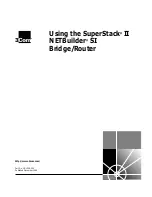
37
•
none
—Requires no username and password at the next login through Telnet. This mode is insecure.
•
password
—Requires password authentication at the next login through Telnet. Keep your password.
If you lose your password, log in to the device through the console port to view or modify the
password.
•
scheme
—Requires username and password authentication at the next login through Telnet.
Authentication falls into local authentication and remote authentication. To use local authentication,
configure a local user and related parameters. To use remote authentication, configure the username
and password on the remote authentication server. For more information about authentication modes
and parameters, see
Security Configuration Guide
. Keep your username and password. If you lose
your local password, log in to the switch through the console port to see or modify the password. If
you lose your remote authentication password, contact the server administrator.
The following table lists Telnet login configurations for different authentication modes.
Authentication
mode
Configuration Remarks
None
Configure not to authenticate users
For more information, see
“
Configure to authenticate users by using the local password
Password
Set the local password
For more information, see
“
Configure the authentication scheme
Configure a
RADIUS/HWTACACS
scheme
Configure the AAA scheme
used by the domain
Remote AAA
authentication
Configure the username
and password on the AAA
server
Configure the
authentication username
and password
Scheme
Select an
authentication
scheme
Local
authentication
Configure the AAA scheme
used by the domain as local
For more information, see
“
Configuring none authentication for Telnet login
Configuration prerequisites
You have logged in to the device.
By default, you can log in to the device through the console port without authentication and have user
privilege level 3 after login. For information about logging in to the device with the default configuration,
see “
.”
















































